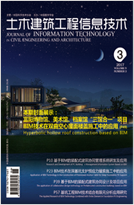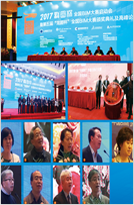2018, 10(3): 116-118. doi: 10.16670/j.cnki.cn11-5823/tu.2018.03.22
ANN在铝模施工中的应用
中国建筑科学研究院深圳分院,深圳 518057 |
Application of ANN in Aluminum Formwork Construction
Shenzhen Institute, China Academy of Building Research, Shenzhen 518057, China |
引用本文:
丘衍航. ANN在铝模施工中的应用[J]. 土木建筑工程信息技术,
2018, 10(3): 116-118.
doi: 10.16670/j.cnki.cn11-5823/tu.2018.03.22

Citation:
Qiu Yanhang. Application of ANN in Aluminum Formwork Construction[J]. Journal of Information Technologyin Civil Engineering and Architecture,
2018, 10(3): 116-118.
doi: 10.16670/j.cnki.cn11-5823/tu.2018.03.22

摘要:铝模板,全称为建筑用铝合金模板系统,是新一代新型模板支撑系统。铝模板系统在建筑行业的应用,提高了建筑行业的整体施工效率,包括在建筑材料、人工安排上都节省很多。铝模板设计研发及施工应用是建筑行业一次大的发展。然而铝模板存在现场变更困难的问题,要求模板严丝合缝。本文探讨采用人工智能算法找出最优的施工顺序,以节省时间,并在虚拟环境中模拟施工的方法来降低出错的概率。
Abstract: The Aluminum formwork, with its full name of the building Aluminum formwork system, is a new generation of formwork support system. The application of aluminum formwork system in the construction industry has improved the overall efficiency of the construction industry, and saved much consumption in the construction materials and labor expenses. The development in design phase and application in construction phase of aluminum formwork, is a major development in the construction industry. However, applications of the Aluminum formwork on site, which requires the formwork joins tightly, encounters difficulty in design modification. This paper investigates the optimal construction order by using the artificial intelligence algorithm to save time, as well as to reduce the probability of error by simulating the construction method in the virtual environment.
| [1] |
Rossini F L, Novembri G, Fioravanti, A. AS&BIM-A Unified Model of Agent Swarm and BIM to Manage the Complexity of the Building Process, CAAD Futures 2017, 321-332. (2017). |
| [2] |
Rossini F L, Novembri G, Fioravanti A. BIm and Agent-based Model Integration for Construction Management Optimization"in: LC3 2017 Volume Ⅱ-Proceedings of the 25th Annual Conference of the International Group for Lean Construction(IGLC), 111-118. |
| [3] |
Modi, P J, Shen, W M, Tambe M, et al. An asynchronous complete method for distributed constraint optimization. In proceedings of the 2nd AAMAS, Autonomous Agents and Multi-Agents Systems, 161-168(2003). |
| [4] |
Freuder, E C, Mackworth A K. Constraint Satisfaction: an emerging paradigm, in Handbook of constraint programming, Chapter 2, Rossi, F, Van Beek, P, Walsh, T, eds, Elsevier(2008). |
| [5] |
Mirahadi F, Zayed T. Simulation-based construction productivity forecast using NeuralNetwork-Driven Fuzzy Reasoning, in Automation in Construction, 65, 102-115(2016). |
| [6] |
PMI(Project Management Institute)PMBOK. A guide to the Project Management Body ofKnowledge, V edition, PMI Editor(2013). |
| [7] |
Andrei A. Rusu, Neil C. Rabinowitz, Guillaume Desjardins, Hubert Soyer, James Kirkpatrick, Koray Kavukcuoglu, Razvan Pascanu, Raia Hadsell: Progressive Neural Networks, arXiv: 1606. 04671v115 Jun 2016. |
| [8] |
Chena S M, Griffis FH, Chen, P H, et al. A framework for an automated andintegrated project scheduling and management system, in Automation in Construction, 35: 89-110(2013). |
| [9] |
Taillandier F, Taillandier P, Tepeli E, et al. Amulti-agent model to manage risks in construction project(SMACC)in Automation inConstruction, 58, 1-18(2015). |
计量
- PDF下载量(35)
- 文章访问量(2469)
- HTML全文浏览量(960)















